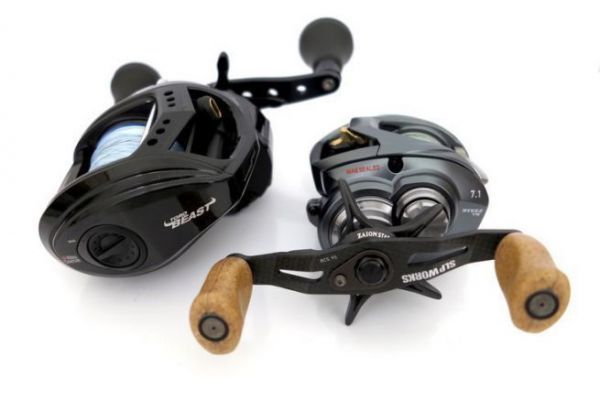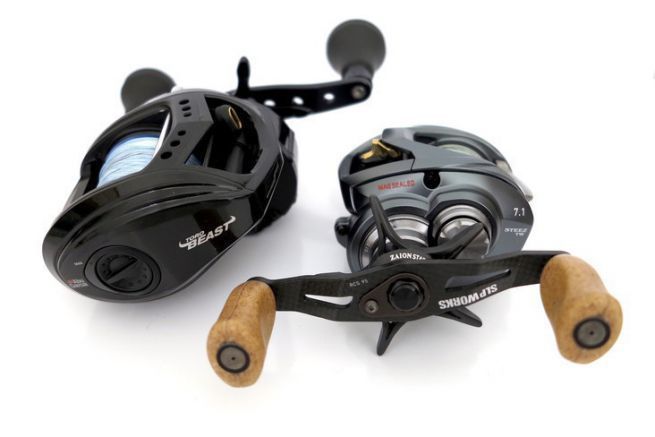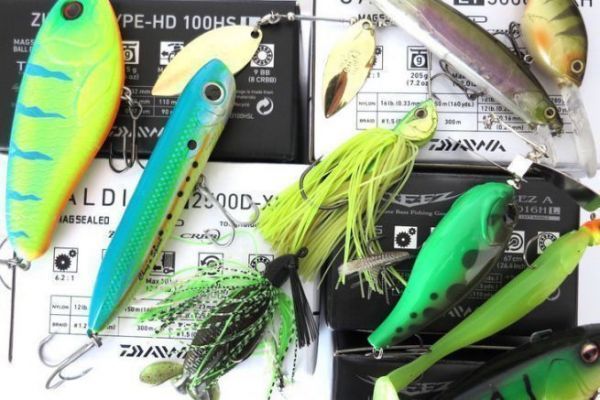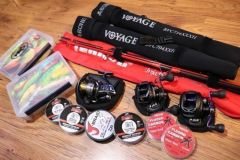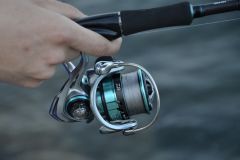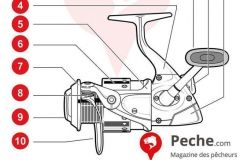It is important to understand that a reel corresponds to a precise mechanism defined mainly by a gearing system allowing the crank and the spool to turn at different speeds. The ratio corresponds to the number of revolutions that the spool of a reel will make with each turn of the crank. It is therefore directly related to this gearing. Moreover, it will be associated with a recovery in cm, that is to say, a length of line recovered with each turn of the crank.
That being said, let's now look at what it says on the boxes of our reels. For the example I voluntarily chose two casting reels of different sizes and ratios: an Abu Garcia Revo Toro Beast reel and a Daiwa Steez A TW reel.
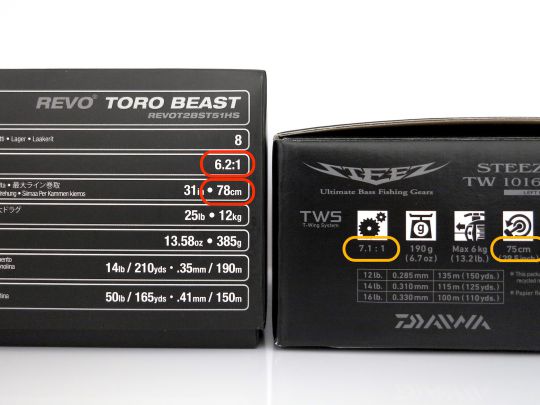
Ratios of 6.2 : 1 and 7.1 : 1
These two inscriptions correspond to the respective ratios of the Abu Garcia Revo Toro Beast and Daiwa Steez A TW reels. Let's see what they mean.
6.2 : 1
The "1" corresponds to the turn of the crank and the "6.2" to the number of turns the spool will make per turn of the crank. Concerning this ratio, the Abu Garcia's spool will therefore make 6.2 turns for each cranking turn.
7.1 : 1
Based on the same principle, the Daiwa reel spool will make 7.1 turns with each cranking.
Recoveries of 78 cm and 75 cm
These are respectively the number of centimeters of line recovered with each turn of the crank by the Abu Garcia reel and the Daiwa.
We therefore find that the lower ratio of the Abu Garcia is associated with a higher recovery. Indeed, a mistake would be to consider that a higher ratio than another would necessarily be associated with a higher recovery as well. We note that this is not the case. Why not?
The diameter of the reel spool
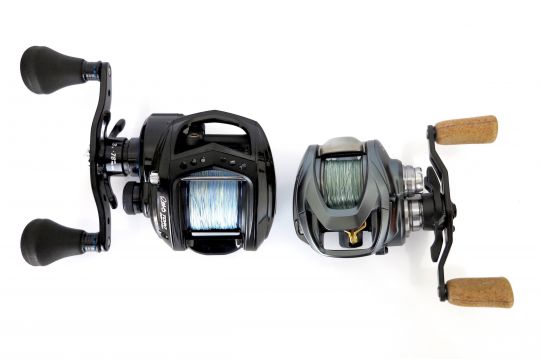
In addition to the gear ratio, a crucial element is the diameter of the spool. Without going into mathematical calculations, we can see in our example that the two reels are of different sizes and therefore the diameter of their respective spools differs. The spool diameter of the Abu Garcia reel is larger than that of the Daiwa reel. This explains why, even with fewer turns of the crank, the number of centimeters of line recovered with the Abu Garcia reel is greater.
Compare what is comparable
You will have understood that when we talk about ratio, we must necessarily associate a quantity of line recovered with each turn of the crank, and not limit ourselves to inscriptions of the type "7.1 : 1", for this to make any real sense.
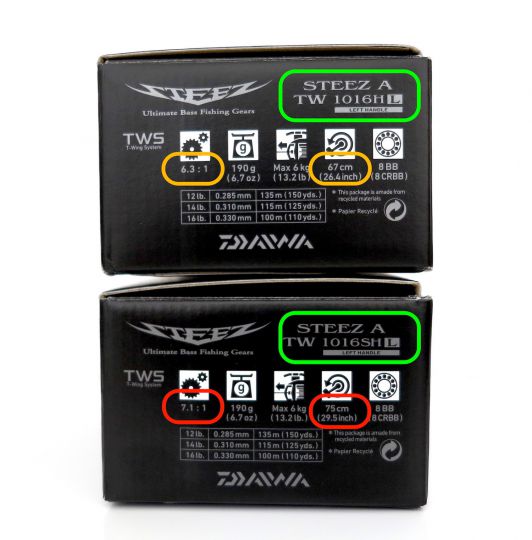
The statement that a ratio of "7.1:1" is necessarily stronger than one of "6.3:1", for example, can therefore only be correct when comparing two reels that are strictly identical or have the same spool diameter. As soon as you compare two different reels, it doesn't make sense anymore. Similarly, two different reels may have the same ratio but not the same associated recovery. It is a matter of comparing what is comparable.
To know more
It is important to note that the manufacturers' data are logically based on measurements made on full coils and not on the hubs of the coils.
We understand that the ratio of a reel will vary according to the amount of line on the spool. The less line on the spool, the smaller the number of centimeters of line recovered with each turn of the crank and vice versa. In the absolute, we can rightly consider that after casting the lure the ratio of a reel will vary between the beginning and the end of the recovery of the line.
Council
So if you attach particular importance to the ratio of your reel, be sure not to wait until it is half empty before refilling! For freshwater fishing, we often use only the first 50 meters of a line spool which is at least 135m long. It is therefore not necessarily mandatory to immediately buy a spool of braid, just fill the gap with a little more backing.
Concerning spinning reels
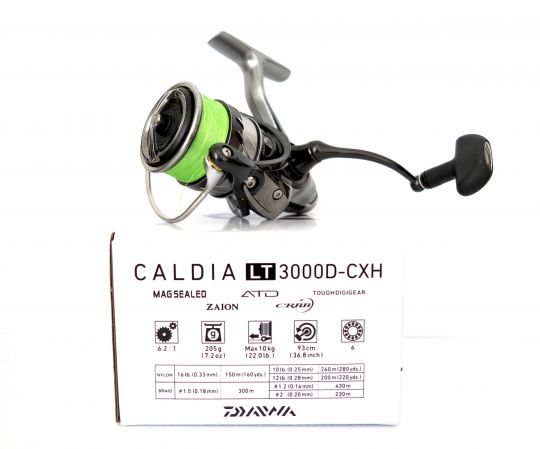
We have dealt with the ratio of casting reels (rotating spool), but the reasoning is much the same for spinning reels with the difference that in this case the spool does not turn, it remains fixed (fixed spool). So we will not talk about the number of turns of the spool per turn of the crank but about the number of turns that the rotor + roller + pick up will make around the spool per turn of the crank. This will result in the same way in a length of line recovered per turn of the crank.

 /
/ 